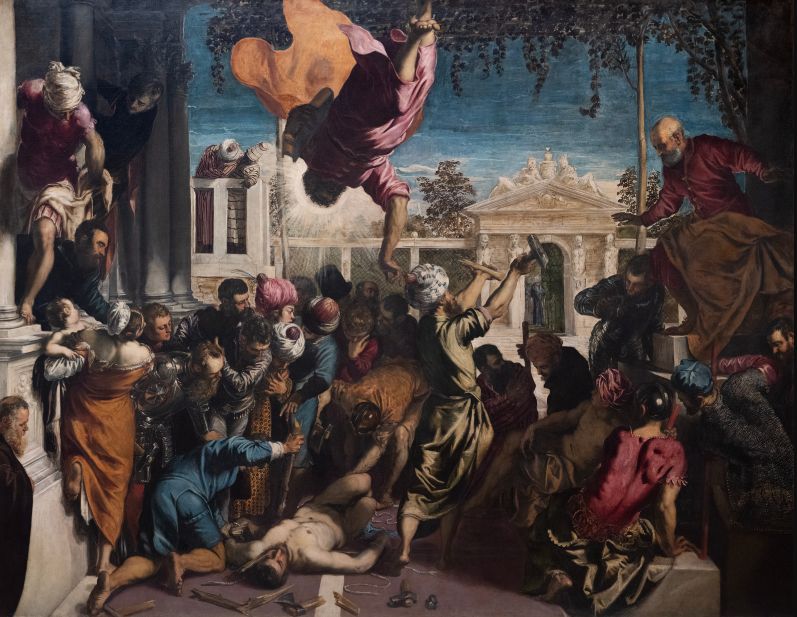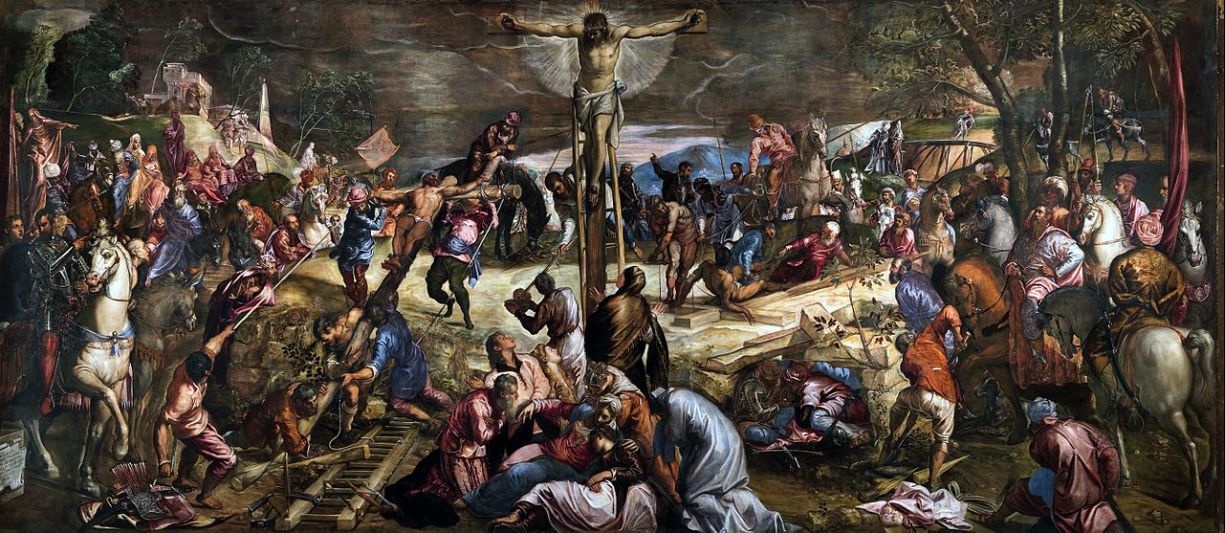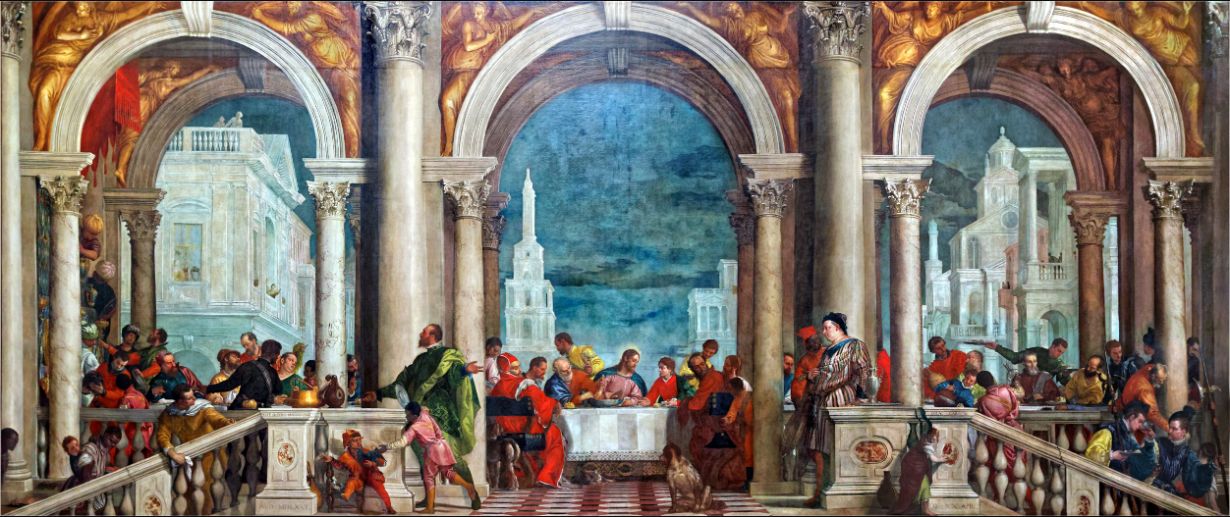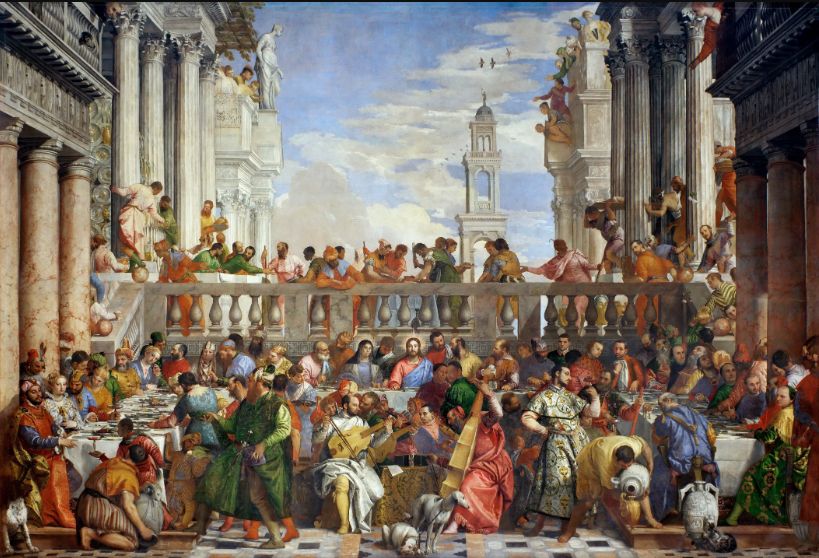In the mid-16th century Venetian art scene, Tintoretto and Veronese emerged as two outstanding painters, becoming the most brilliant artistic giants following Titian. Starting in the 1550s, Titian mainly worked for Philip II of Spain and rarely painted for Venice. Consequently, the city's artistic commissions shifted towards these younger artists.
Tintoretto (Jacopo Robusti Tintoretto, 1518-1594) is said to have risen in Titian's workshop, possibly learning Titian's painting techniques there. However, he did not completely inherit Titian's style but developed his own unique artistic approach. He preferred intense and somewhat irrational perspective effects, extreme foreshortening, and depicting robust human figures in motion, showcasing a different sensitivity. Some believe he tried to combine Titian's color with Michelangelo's drawing techniques. His fervent faith, volatility, and lack of worldly knowledge starkly contrasted with Titian's personality.

Growing up during a period filled with Counter-Reformation fervor, Tintoretto's religious paintings also possessed revelatory emotional power. For example, his monumental "Crucifixion" for the Scuola Grande di San Rocco overwhelms and conquers the audience. This vast panoramic canvas spans the walls and extends to the ceiling, creating a wide-angle effect. In the foreground, figures larger than life twist and merge in a sea of visual brilliance, forming a dramatic unified whole. Massive, conflicting diagonals converge and cross at Christ, making him stand alone above the chaos. Every figure is pre-arranged to direct towards the centrally dominant cross, leaving the viewer almost overwhelmed.

Veronese (Paolo Caliari Veronese, 1528-1588), another contemporary master, exhibited a vastly different style. His works are filled with details, often deemed insignificant. For instance, in his "Last Supper," the notable details include dogs, dwarfs, German soldiers, and a fool with a parrot. When summoned before the Inquisition to explain these elements, Veronese replied, "My task is to beautify the painting according to my judgment," adding, "We painters take the same liberties as poets and madmen." Eventually, the painting was renamed "The Feast in the House of Levi."

Veronese's artistic style not only showcased his attention to detail but also his creativity and pursuit of beauty. With complete confidence, he created an imaginary world of beauty and radiance, filled with marble, gold, and precious materials, offering a visual feast of abundance and splendor. His paintings are rich in color and intricate in composition. Through masterful use of light and shadow, he created a sense of movement and opulence, immersing the viewer in the grandeur of a Venetian feast.
The artistic achievements of Tintoretto and Veronese not only represented their individual talents but also reflected the cultural prosperity of 16th-century Venice. This city, with its unique geographical location and rich cultural heritage, became one of the art centers of the Renaissance. Within this vibrant city, Tintoretto and Veronese, through their distinctive artistic styles, demonstrated the diversity and richness of the Venetian school of painting.

The art of Tintoretto and Veronese deeply influenced their contemporaries and provided abundant inspiration and references for later artistic developments. Tintoretto's dramatic and powerful style, along with Veronese's luxurious and delicate approach, became significant hallmarks of the Venetian school. Their works are not only visually stunning but also emotionally moving.
Tintoretto and Veronese, with their outstanding artistic achievements and unique styles, added a glorious chapter to the Venetian school of painting. Through their diverse artistic expressions, they showcased the cultural prosperity and artistic accomplishments of Renaissance Venice. Their works are not only treasures in art history but also profound expressions of human emotion and faith.